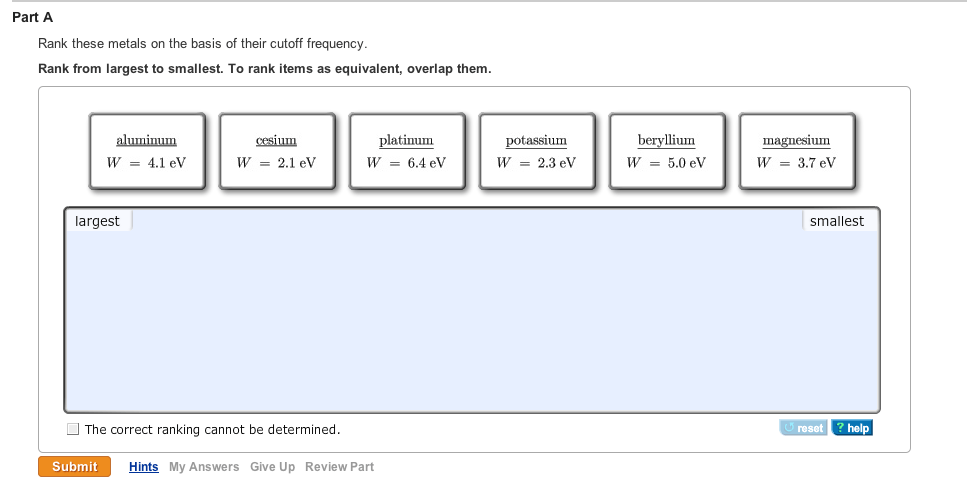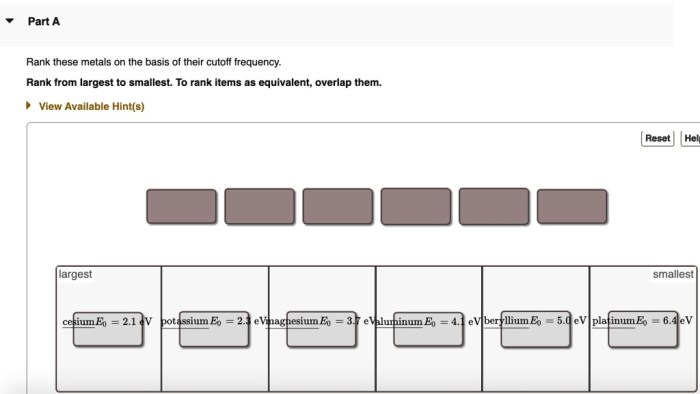Rank these metals on the basis of their cutoff frequency, a fundamental property that governs the behavior of materials in electronic applications. This article delves into the significance, measurement techniques, influencing factors, and practical applications of cutoff frequency in metals, providing a comprehensive overview for materials scientists and engineers.
Understanding cutoff frequency is crucial for tailoring materials to specific applications, optimizing device performance, and advancing the field of materials science.
Cutoff Frequency in Metals

Cutoff frequency is a crucial parameter in materials science that determines the frequency range over which a material can effectively transmit electromagnetic radiation. It is a measure of the point at which the material’s ability to transmit radiation drops significantly.
Understanding cutoff frequency is essential for designing and optimizing materials for specific applications. In this article, we will delve into the concept of cutoff frequency, its experimental determination, influencing factors, ranking of metals based on cutoff frequency, and its applications in various fields.
Experimental Determination of Cutoff Frequency

Several experimental techniques are employed to measure cutoff frequency in metals. These include:
- Transmission spectroscopy:This technique involves measuring the transmission of electromagnetic radiation through a metal sample over a range of frequencies. The cutoff frequency is determined as the frequency at which the transmission drops significantly.
- Reflection spectroscopy:Similar to transmission spectroscopy, reflection spectroscopy measures the reflection of electromagnetic radiation from a metal surface. The cutoff frequency is determined as the frequency at which the reflection increases significantly.
- Impedance spectroscopy:This technique involves measuring the impedance of a metal sample over a range of frequencies. The cutoff frequency is determined as the frequency at which the impedance changes significantly.
Each of these techniques has its advantages and limitations, and the choice of technique depends on the specific material and frequency range of interest.
Factors Affecting Cutoff Frequency: Rank These Metals On The Basis Of Their Cutoff Frequency

The cutoff frequency of a metal is influenced by several factors, including:
- Conductivity:The conductivity of a metal is inversely proportional to its cutoff frequency. Higher conductivity metals have lower cutoff frequencies.
- Dielectric constant:The dielectric constant of a metal affects the speed of electromagnetic radiation propagation through the material. Higher dielectric constants lead to lower cutoff frequencies.
- Thickness:The thickness of a metal sample affects its cutoff frequency. Thicker samples have lower cutoff frequencies.
- Surface roughness:Surface roughness can scatter electromagnetic radiation, leading to lower cutoff frequencies.
Understanding these factors is crucial for tailoring the cutoff frequency of metals for specific applications.
Popular Questions
What is cutoff frequency?
Cutoff frequency is the frequency at which the amplitude of an electrical signal decreases to a specified level, typically 50%, of its original value.
How is cutoff frequency measured in metals?
Cutoff frequency can be measured using various experimental techniques, including impedance spectroscopy, microwave absorption measurements, and time-domain reflectometry.
What factors affect the cutoff frequency of metals?
The cutoff frequency of metals is influenced by several factors, including conductivity, permittivity, permeability, and geometry.